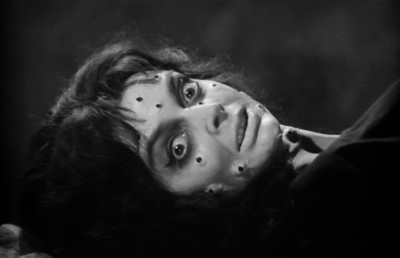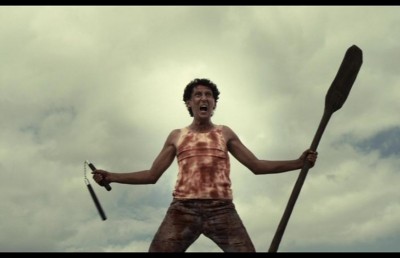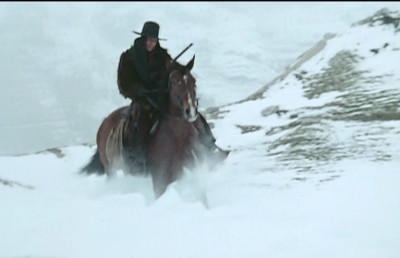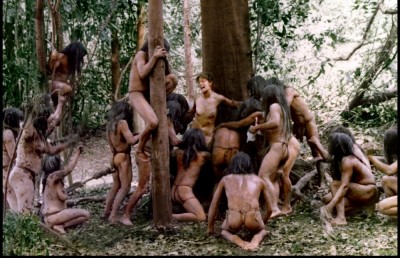Virgil and Dante at the Cinecittà: The Influence of Epic Poetry on Italian Popular Cinema
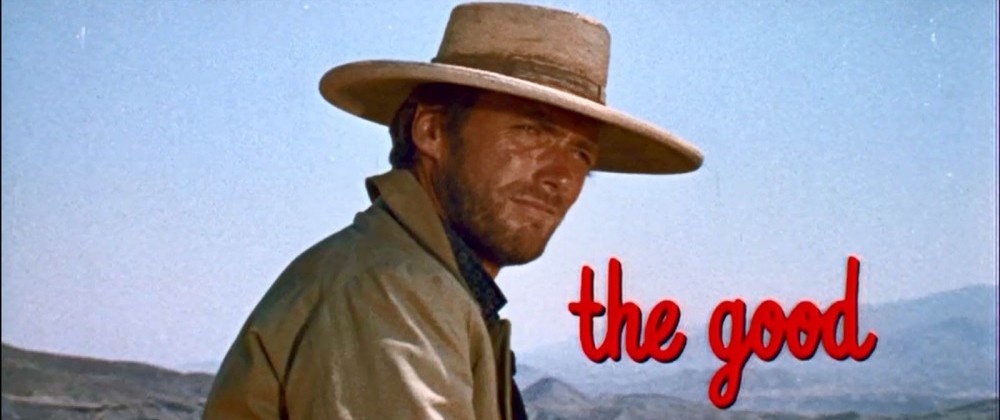
Italian popular cinema flourished in the postwar period. Audiences were treated to inventive cinematography, daring lighting, and meticulous costume and set design, and these elements tended to look stunning, even when the setting of the film itself was “ugly.” The makers of these films brought their own visual flair to previously existing American genres, energetically breathing new vitality into them with kinetic imagery and a seemingly more well-rounded European world view. In the case of the “spaghetti” Western and the giallo, the influence of previously existing American genres (the Western, the Crime/Noir film) can plainly be seen. However, beyond the obvious influences, Italian films of the period also owe a tremendous debt to classical literature, and in particular to epic poetry. Though self-consciously modern in their moral concerns and visual approaches, screenwriters and directors from Mario Bava to Michele Soavi have drawn upon the proud Italian tradition and rich imagery of the poets Virgil and Dante, endowing their films with a gravitas often absent from their American counterparts. In this essay I will make a comparative analysis of a few key themes and images found in Virgil’s Aeneid and Dante’s Divina Commedia and their resulting manifestations in certain Italian filoni, listed below. Focusing mainly on Book VI of the Aeneid and on Dante’s Inferno I hope to show some of the many ways in which themes drawn from these revered poems have been re-infused into Italian cinema, creating new myths based on old ones. The films to be considered as part of this comparative analysis are:
Giallo
La Ragazza che sappeva troppo??/ ??The Girl Who Knew Too Much (1963)
Writers: Mario Bava, Enzo Corbucci, Ennio De Concini, Eliana De Sabata, Mino Guerrini and Franco Prosperi. Director: Mario Bava.
Sei donne per l’assassino??/ ??Blood and Black Lace (1964)
Wrs.: Marcello Fondato, Guiseppe Barilla and Mario Bava. Dir.: Mario Bava.
L’uccello dalle piume di cristalo??/ ??The Bird with the Crystal Plumage (1970)
Wr. and Dir.: Dario Argento.
La coda dello scorpione??/ ??The Case of the Scorpion’s Tale (1971)
Wrs.: Ernesto Gastaldi, Eduardo Manzanos Brochero and Sauro Scavolini. Dir.: Sergio Martino.
Tutti I colori del buio??/ ??All the Colors of the Dark (1972)
Wrs.: Ernesto Gastaldi, Santiago Moncada and Sauro Scavolini. Dir.: Sergio Martino.
Spaghetti Western
Per un pugno di dollari??/ ??A Fistful of Dollars (1964)
Wrs.: A. Bonzzoni, Victor Andrés Catena, Sergio Leone and Jaime Comas Gil. Dir.: Sergio Leone.
Django (1966)
Wrs.: Sergio Corbucci, Bruno Corbucci, José Gutiérrez Maesso, Franco Rossetti and Piero Vivarelli. Dir.: Sergio Corbucci.
Il buono, il brutto, il cattivo??/ ??The Good, the Bad and the Ugly (1966)
Wrs.: Luciano Vincenzoni, Sergio Leone, Agenore Incrocci and Furio Scarpelli. Dir.: Sergio Leone.
El chuncho, quién sabe?/ A Bullet for the General (1966)
Wrs.: Salvatore Laurani and Franco Solinas. Dir.: Damiano Damiani.
Se sei vivo spara??/ ??Django Kills (1967)
Wrs.: Franco Arcalli, Benedetto Benedetti, María del Carmen Martínez Román and Giulio Questi. Dir.: Giulio Questi.
Queimada??/ ??Burn (1969) [not technically a spaghetti western]
Wrs.: Franco Solinas and Giorgio Arlorio. Dir.: Gillo Pontecorvo.
Horror
Operazione paura??/ ??Kill, Baby Kill (1966)
Wrs.: Romano Migliorini, Roberto Natale and Mario Bava. Dir.: Mario Bava.
Lisa e il diavolo??/ ??Lisa and the Devil (1974)
Wrs.: Mario Bava, Alberto Cittini and Alfredo Leone. Dir.: Mario Bava.
La Casa dalle finestre che ridono??/ ??The House with the Laughing Windows (1976)
Wrs.: Antonio Avati, Pupo Avati, Gianni Cavini and Maurizio Costanzo. Dir.: Pupi Avati.
Suspiria (1977)
Wrs.: Dario Argento and Daria Nicolodi. Dir.: Dario Argento.
Dellamorte Dellamore (1994)
Wr.: Gianni Romoli. Dir.: Michele Soavi.
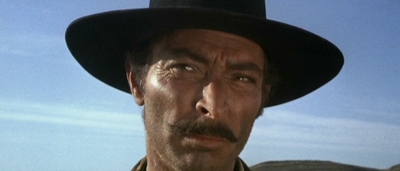
The ‘Bad’ of the bunch
The AENEIDIn the Aeneid Virgil recounts the origins of Rome, and underscores the importance of peace over war, and civilization over barbarism. The poem, which begins at the end of the Trojan War, follows Aeneas from the time he and his fellow Trojans wander the seas statelessly, through a bitter civil war on the Italian peninsula, to his founding of the nation Rome. Throughout the story Virgil acutely emphasizes the juxtaposition between Aeneas’ righteous behavior and the undignified savagery of his enemies the Greek army, and the lawless tribes of Italy. Aeneas’ founding of Rome at the end of the poem is a stand for order and progress, representing the hope that the common good can prevail over common vices. The same stress on the importance of law and order can be found in all five Spaghetti Westerns from this list, which take place on the frontier lands of a new civilization attempting to arise from the ashes of a war, in this case the American Civil War. As with the stateless Trojans, many ex-soldiers of the Civil War wandered the West aimlessly after all that they had fought for –along with the purpose of their young lives– had disappeared. Freed from the commands of their generals, and let loose in a land whose laws had yet to be written, some of these ex-soldiers became the gunslingers, bounty-hunters and revolutionaries of Western literary and film mythology. But these desperadoes are never beyond redemption, as their worth is not measured by their past, but by their present actions.
In the Aeneid the standards of family, matrimony and the societal stability they represent, are ideals worth fighting and dying for. One of the poem’s most telling and lasting images appears in book II, at the collapse of Troy when Aeneas escapes carrying his father Anchises on his back, leading his young son Ascanius beside him, and with his wife Creusa following behind holding the carved images the gods (book VI, lines 707-711). In one sentence, Virgil shows Aeneas to be the protector of his people’s past and future, and preserver of their traditions. Though the gunslingers in Italian Westerns are a change from the corruption, war and mass slaying of the past, they also carry forth the past’s most crucial traditions of honor and altruism, and can be counted on, in a pinch, to defend domestic stability when it is threatened.
INFERNOIn the words of Joseph Gallagher, Dante’s Divina Commedia is a “parable of political realities (corruption versus honesty) […] and mystical realities (the individual’s self-absorption versus his or her trusting surrender to the Divine)” (Gallagher, J. To Hell & Back with Dante; A modern reader’s guide to The Divine Comedy, p. xx; 1996, Ligouri, Missouri, Triumph Books). The first part of this description applies to classic Spaghetti Westerns considered here, Per un pugno di dollari??/ ??A Fistful of Dollars (1964), Django (1966), Il buono, il brutto, il cattivo??/ ??The Good, the Bad and the Ugly (1966), El chuncho, quién sabe?/ Bullet for a General (1966), and Se sei vivo spara??/ ??Django Kill: If You Live, Shoot (1967), while the second part could be about such films as Tutti I colori del buio (1972), Suspiria (1977) and Dellamorte Dellamore (1994). Like the Divina Commedia, El Chuncho, quién sabe? (1966) and Quemada??/ ??Burn (1969) —both written by Franco Solinas— are political lessons concealed within adventure stories, and strive to bring political awareness to the masses through allegorical imagery.
Dante was a staunch Catholic who composed his poem for the common man. In this aim he wrote in the “vernacular Italian and not the Latin of scholars” (ibid, p. xviii.). Because of his faith and intended audience Dante showed wealth as a gateway to corruption. Se sei vivo spara (1967) and Sei donne per l’assassino (1964) teach similar lessons to a modern audience; in the Western, gold is repeatedly the cause of death to all who possess it, with the hero’s attitude towards the deadly ore a plain indicator of the filmmakers’ thoughts on ill-gotten gains; in the giallo, surrounded by the trappings of wealth (car alarms, posh villas and second homes) the characters enact a perverse pantomime of greed, adultery, addiction and murder. The creators of these films intended these visions of wasteful excess to both titillate and infuriate their working class terza visione audiences. Sei donne per l’assassino is a kind of miniature people’s revolution, complete with the systematic execution of the aristocracy.
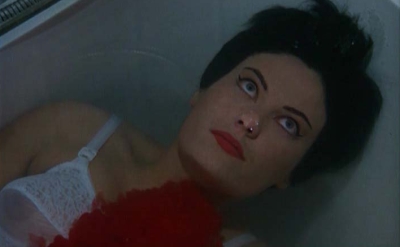
Blood and Black Lace
Although a devout Catholic, Dante did not hesitate to depict many who shared his faith suffering the agonies of the Inferno. The narrator registers surprise and mirth as he encounters friars and priests (cantos 23 and 27), Popes (canto 19) and an assortment of lawmakers, aristocrats and noblemen (cantos 16 and 28) twisting in the varied forms of Hells’ cruelty. The westerns, gialli and horror films in this list ridicule a similarly wide array of public figures, from the malevolent preacher in Django (1966) to the hypocritical clerics of Il buono, il brutto, il cattivo (1966) and El chuncho, quién Sabe?; from the murderous cross-dressing parish priest in La Casa dalle finestre che ridono (1976) to the corrupt sheriffs, judges, aldermen and town leaders in all five spaghetti westerns; from the inept, bumbling police investigators in L’uccello dalle piume di cristalo (1970) and La coda dello scorpione (1971) to the doctor, nuns, mayor and detective lampooned in Dellamorte Dellamore. Dante clearly inscribes in the Inferno his distaste for those who abuse power to exploit the weak and the poor. Like the highly political Italian filmmakers of the 1960’s and ‘70’s, Dante often expressed his disappointment in the current leadership in often surprisingly violent ways, such as with the image of the recent Pope Boniface buried head down with only his flaming feet protruding from the ground (canto 19, lines 20-30). Similarly, the creators of these films seem to take special pleasure in showing dastardly fakes die particularly nasty deaths. In the not-too-distant wake of fascism and Nazism, and in a current of heightened political awareness, the Italian filmmakers of the era did away with the symbols of oppression in some of the most graphic depictions of violence seen on the screen until that time. However, as with the often-harsh words of Dante, these horrific images stem from a profound compassion for humanity.
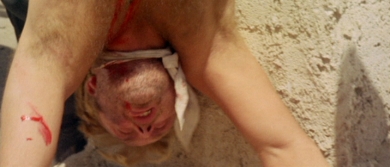
Django Kill: If You Live, Shoot
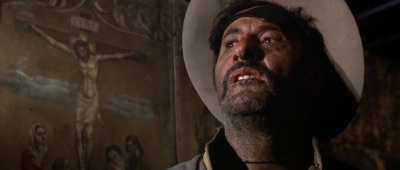
Tuco’s false piety in Il buono, il brutto, il cattivo
Virgil and DanteThe wandering Aeneas travels from the open sea, through the cave with “a hundred wide approaches, a hundred mouths” (book VI, l.43) into the confined space of Hades. Dante, in the first part of his voyage, travels down the funnel-shaped abyss of Hell, starting at its wide opening and ending up in its dense stuffy center. Both travelers first pass through a thick and disorienting forest. Similarly, in many of these films characters travel from open spaces into confined ones, leading to a change in their fate, or in the case of many gialli, to the encounter with it. In Per un pugno di dollari (1964) and its imitators Django and Se sei vivo spara —as well as in its prime inspiration Yôjimbô (Akira Kurosawa, 1961)— the protagonists wander aimlessly in wide mountain ranges at the films’ openings, only to become drawn into claustrophobic towns where they then involve themselves in local social tensions. In La Ragazza che sappeva troppo (1963), Operazione paura (1966), Lisa e il diavolo (1974), La Casa dalle finestre che ridono and Suspiria, outsiders or foreigners travel from the open spaces of the sky (in airplanes) or the countryside, into towns and houses where they become entangled (and sometimes killed) in local mysteries (the foreigner in a strange land being a common narrative trope of the giallo). The heroines of Tutti I colori del buio and Suspiria travel through thick dark woods en route to their encounters with the unknown. In each case the passage from an open to a confined space signals the transition from a passive state of observation to an active one of involvement. Transitions of physical space portend crises in the characters’ lives, and their need to resolve them.
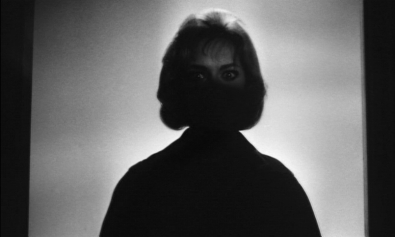
The Girl Who Knew Too Much
The Divine Comedy is largely concerned with the positive change that occurs in a man who makes a mystical voyage of self-discovery. The opening lines,
In the middle of the journey of our life,
I came to myself within a dark wood
Where the straight way was lost
refer to a life-altering event at some crucial point in an individual’s life. The traveler in the Divina Commedia (Dante himself) acknowledges that he has lived a life of sin in the past. He voyages through Hell, Purgatory, and finally to Paradise, where his beloved Beatrice delivers him an urgent message to repent from his ways. Buoyed to greater piety by his experience, he returns to Earth determined to live out his life in the fullness of God’s grace. In the Aeneid, written years before Christianity, the transformation is from man to hero. In the opening chapters, Aeneas pursues his own will, pausing from his destiny to have a love affair with Queen Dido of Carthage, a relationship which proves harmful to both their nations. However as the narrative progresses, Aeneas increasingly comes to accept the difficult role of nation-builder, and enters a union with the Latin Princess Lavinia, contrived simply to unite their two nations. As Aeneas gradually gives up his own wishes, and strives towards the common good, the actual tone of his pronouncements becomes more restrained, focused, momentous and above all more altruistic. The protagonists of Per un pugno di dollari, Django and Se sei vivo spara each undergo a specifically Aeneas-like transformation. In each film, but in particular the first two, the “Stranger” is initially presented as a soulless mercenary concerned only with his own enrichment. Soon though, he encounters a situation in which the intolerable mistreatment of the defenseless prompts him into action. Though he begins as a passive outside viewer, he is affected along the way by the threat to a family (and what such a threat represents to civilization as a whole), ending by risking his wealth and life to avenge the injustice and return stability to the community. As in both epic poems, these transformations occur with a great deal of personal suffering to the hero.
Both Aeneas and Dante are haunted by the memories of dead lovers. In Aeneas’ case, he carries the grief of having lost his first wife Creusa in the scuffle to escape the fall of Troy, and the guilt of having abandoned Dido, who killed herself as a result. Dante pines for the virgin Beatrice, whom he never even met before she died at the age of 24, but whose beauty haunted and inspired him throughout his career. The protagonists in Per un pugno di dollari and Django (who totes a coffin with him everywhere he goes) merely allude to a past love which they were unable to save, but in both cases their sense of unresolved loss seems to be what spurs them on to positive action. The idea of a dead lover is one of the central themes of Dellamorte Dellamore wherein, motivated by guilt from having accidentally killed his only true love Lei (“She”), Francesco Dellamorte proceeds to repeatedly re-create and re-destroy her. When Aeneas visits the Underworld he meets Dido’s ghost, but she refuses to speak to him, instead running off into the shadows with the ghost of her first husband Sychaeus. Having hoped to encounter her restful spirit, hear her story and apologize to her, Aeneas instead finds her in an unearthly version of her earthly tortures. Unable to resolve their relationship, he watches helplessly as it is destroyed forever.
A final similarity must be pointed out between the actual poetic and film styles employed by the poets and filmmakers in question. The descriptions of violent death and torture in the horror passages of Virgil and Dante can be seen as early predecessors of “shock” cinema. Though guided overall by aesthetic concerns, neither poet shied away from hair-raising depictions of savagery. In telling the Aeneid and other poems Virgil often pauses to ask the muse Calliope to give him the courage to recount events that cause him great fear. Dante, in his introductory canto says
Ah, how hard a thing it is
To tell of that wood, savage and harsh and dense,
The thought of which renews my fear!
So bitter is it that death is hardly more.
But to give account of the good which I found there
I will tell of the other things I noticed there.
In each case the author willingly undergoes a form of artistic pollution, allowing his verse to repulse as well as delight the reader. It is as if only by putting himself and his style in a degree of “danger” can the poet meaningfully report his findings back to an audience. Dante clearly wishes the unpleasant descriptions in his Inferno to positively affect people’s behavior by turning them away from acts of sin. In La Casa dalle finestre che ridono death is frequently linked to a higher level of understanding. In the tape-recording of the painter Legnani’s voice, presumably made while he is slaughtering a victim, he speaks of achieving ultimate understanding through death (that of others and his own). Later, the protagonist only solves the case (achieving “understanding”) by becoming the killer’s next victim.
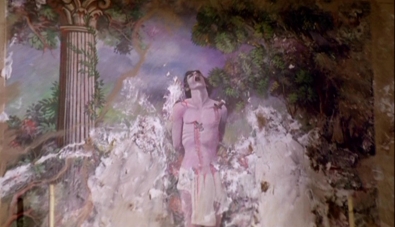
To suffer for thine art: La Casa dalle finestre che ridono
In Tutti I colori del buio and Lisa e il diavolo the heroines experience death-like dreams which provide them with the clues towards their spiritual “awakenings.” The effect of the willful submission of the author to the experience of death in order to “report back” to the reader is most literally transferred to film by Michele Soavi in Dellamorte Dellamore, in which the director places the camera itself into often physically “impossible” positions, in order to visually document a deathlike experience, such as when the camera looks out from the Grave. Having been to the depths and returned in the name of their art, Virgil and Dante might have agreed with the words of Francesco Dellamorte “life goes on,” in perhaps one of screen history’s most ironic and fitting uses of the expression.
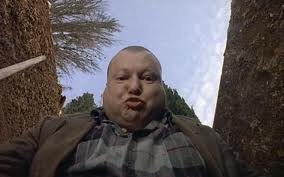
Dellamorte Dellamore
ConclusionOf course the works of Virgil and Dante are not the only, nor the prime influences on these films. Besides the obvious cinematic genre influences, the films frequently draw power from other culturally inscribed art forms, such as painting, opera and commedia dell’arte. Catholicism (or its manifestation through the Church) is probably the most overarching and indelible influence over these filmmakers, while Marxism and antifascism are perhaps most present in their discourse due to their relevance to contemporary postwar politics. Virgil and Dante may have been woven into Italian cinema more subconsciously than other sources, but the lasting power of these hallowed poets is evidenced by the way in which so many of their themes function as fundamental substance and backdrop to these vibrant and violent films.
Bibliography
Dante Aligheri. The Divine Comedy. Trans. Sinclair, John D. New York, Oxford University Press, 1939.
Dudley, D. R. The Civilization of Rome. New York, Mentor Books, 1960.
Gallagher, J. To Hell and Back: A modern reader’s guide to the Divine Comedy. Ligouri,
Missouri, Triumph Books, 1996.
Hamilton, E. The Roman Way. New York, W. W. Norton & Company, 1963.
Highet, G. Poets in a Landscape. New York, Alfred A. Knopf, 1957.
Trans. Rieu, E. V. A Book of Latin Poetry. London, Methuen & Co. Ltd., 1953.
Virgil. The Aeneid. Trans. Day Lewis, C. New York, Doubleday & company, Inc., 1953.


